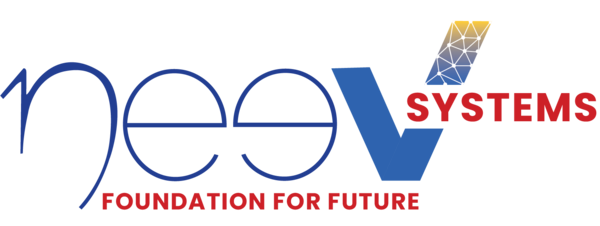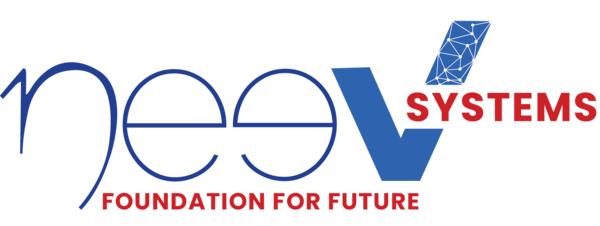In today’s digital era, businesses are rapidly adopting cloud solutions to streamline operations, boost scalability, and cut infrastructure costs. One of the significant shifts accompanying this move is the transition from a traditional Capex (Capital Expenditure) model to an Opex (Operational Expenditure) model. Opex allows businesses to closely match expenses with actual usage, promoting cost efficiency and flexibility. This move eliminates the need for substantial upfront investments in physical infrastructure, granting businesses the agility to adapt to market changes.
However, as companies embrace the Opex model, effectively managing and optimizing ongoing operational costs becomes imperative to prent budget overruns and maintain financial control.
In this blog, we’ll delve into the significance of this alignment and share practical tips for achieving a cost-effective and efficient cloud presence.
Let’s get started!
Cloud Service Models
Businesses entering the cloud encounter three primary service models:
- IaaS (Infrastructure as a Service): Provides virtualized computing resources, including virtual machines, storage, and networking. Ideal for businesses needing control over specific infrastructure aspects.
- PaaS (Platform as a Service): Abstracts more infrastructure details, offering a platform for developers to build, deploy, and manage applications. Simplifies development with pre-built tools and services.
- SaaS (Software as a Service): Delivers fully functional software applications over the internet. Users access them through a web browser without dealing with software maintenance or infrastructure management complexities. Examples include email services and CRM software.
Cloud Deployment Models
- Public Cloud: Third-party provider offers scalable, cost-effective services over the Internet to the general public, eliminating the need to manage physical infrastructure.
- Private Cloud: Dedicated cloud infrastructure for one organization, hosted on-premises or by a third party, providing greater control and security.
- Hybrid Cloud: Combining public and private clouds, allowing data and applications to be shared, offering flexibility based on specific business needs.
Efficiently integrating public, private, and hybrid cloud deployment models hinges on effective Cloud Cost Optimization. This practice aligns cloud usage with business goals, shaping a resilient and goal-oriented cloud infrastructure by reducing expenses.
What is Cloud Cost Optimization?
Cloud cost optimization is the practice of efficiently reducing expenses in a cloud environment while maximizing business benefits. It involves strategies, best practices, and tools to identify and minimize mismanaged or excess resources, aligning computing resources with specific applications and workloads. Unlike Cloud Cost Management, which focuses on tracking and analyzing expenditures, cost optimization goes beyond cost control, aiming to align costs with overarching business objectives for maximum value.
Here’s a more detailed side-by-side comparison table highlighting the key differences between cloud cost optimization and cloud cost management:
| Aspect | Cloud Cost Optimization | Cloud Cost Management |
| Definition | Focused on reducing cloud expenses while maintaining or improving performance and functionality. | Broader discipline that includes cost optimization but also encompasses cost tracking, budgeting, forecasting, and overall financial governance. |
| Primary Goal | Minimize cloud spending without sacrificing performance or user experience. | Ensure cost visibility, control, and alignment with budgets and business goals. |
| Focus | Specific cost reduction strategies, like rightsizing, resource scheduling, and using reserved instances. | Comprehensive approach, including tracking, analysis, governance, budgeting, and optimization strategies. |
| Key Activities | Identifying underutilized resources. Right-sizing instances and resources. Leveraging reserved instances. Implementing auto-scaling and resource scheduling. |
Tracking and categorizing cloud costs. Setting budgets and cost allocation. Analyzing spending patterns and trends. Implementing policies, cost controls, and chargebacks. |
| Implementation Approach | Tactical and execution-oriented. Focused on immediate cost savings. | Strategic and encompassing a long-term perspective on cost control. |
| Tools and Technologies | Cloud cost analysis tools, cost calculators, and optimization frameworks. | Cloud cost management platforms, financial dashboards, and cost allocation tools. |
| Responsibility | Typically falls under the purview of cloud engineers, DevOps, or IT teams. | Involves various stakeholders, including finance, IT, and business managers. |
| Performance Impact | Aims to balance cost savings with performance requirements. | Focuses on aligning costs with business objectives, which may or may not impact performance. |
| Metrics and KPIs | Cost savings, cost per performance unit (e.g., cost per transaction), utilization rates. | Budget compliance, cost forecasting accuracy, cost allocation, and spending visibility. |
| Compliance and Governance | Less emphasis on compliance and governance aspects. | Includes governance policies, security, and compliance considerations. |
| Cost Reduction Approach | Directly reduces cloud expenses by optimizing resource utilization. | Ensures that spending is controlled and aligned with organizational goals. |
| Business Alignment | Primarily technical focus. | Aligns cloud spending with business objectives and budget constraints. |
It’s important to note that cloud cost optimization is a subset of cloud cost management. While cost management covers a broader range of financial activities, cost optimization specifically targets strategies to reduce spending. Both are crucial for effective financial control in a cloud environment.
Why Does Cloud Cost Optimization Matter?
According to a survey, worldwide spending by businesses on cloud computing infrastructure is forecast to top $1 trillion for the first time in 2024. However, Flexera reports that almost 30% of this cloud spend is wasted, resulting in $168 billion being wasted. This waste can manifest in various ways, from over-provisioned resources to unused or underutilized instances. Therefore, the need of the hour is to have a cloud cost optimization strategy in place.
Here are some reasons cloud cost optimization is essential and beneficial for businesses.
- Cost savings: Continuous cloud cost optimization helps reduce expenditure, preventing budget overruns and freeing up funds for critical business needs.
- Resource efficiency: By right-sizing resources and eliminating unnecessary capacity, you only pay for what you need when needed.
- Budget predictability: Effective cost optimization leads to a more predictable cloud budget, enabling accurate financial forecasting and better strategic planning.
- Enhanced visibility: Cloud cost optimization provides greater transparency into your spending, which fosters accountability and aligns your technology investments with business goals.
- Competitive advantage: With efficient resource utilization and cost control, your organization can focus on innovation, accelerate time-to-market, and gain a competitive edge by prioritizing product development and marketing initiatives.

Maximize Your Cloud Efficiency Now
Cloud Cost Optimization Strategies To Ensure Effective Business Alignment
- Get clarity on objectives: Before optimizing cloud costs, define clear business goals such as cost savings, revenue increase, operational cost reduction, or enhanced customer experience. Tailor optimization efforts to align with these objectives.
- Understand your cloud bill: Analyze your cloud bill to identify optimization opportunities in various cost components, ensuring effective budget control. Look at computing, managed services, storage, bandwidth, support costs, and discounts to pinpoint areas for optimization.
- Optimize throughout development: Integrate cost optimization into the entire software development lifecycle, embedding cost-efficiency from planning and development to testing, deployment, monitoring, maintenance, and updates.
- Choose the right storage: Select storage options wisely to balance performance and cost based on data requirements. Opt for the appropriate storage type (e.g., block or object storage) aligned with data characteristics and business needs for improved efficiency.
- Effective tagging: Label infrastructure with attributes like lifecycle stage, production status, and cost allocation for informed decision-making. Use tags for scheduling, testing, and resource termination.
- Cost centers: Implement cost centres to establish efficient chargeback mechanisms and hold business units accountable for resource consumption.
- Application modernization: Modernize applications to align with cloud-native principles, increasing cost efficiency. Evaluate development costs and long-term benefits for optimal investment.
- Right-Size your services: Regularly assess and adjust cloud resources based on actual needs to prevent over-provisioning and underutilization. Analyze workload patterns using historical data and monitoring tools for enhanced performance and cost efficiency.
- Identify and eliminate waste: Monitor cloud resource usage to spot idle resources and unnecessary storage volumes. Implement automated tools to address waste, reducing costs and improving operational efficiency.
- Explore autoscaling with Kubernetes: Implement autoscaling, especially with solutions like Kubernetes, for dynamic adjustment of computing resources based on actual usage. This optimizes resource allocation and reduces costs, with potential savings of up to 90%, as noted by Alibaba Cloud.
- Leverage reserved and spot instances: Use reserved instances for long-term workloads and spot instances for non-critical tasks. This strategy, especially when rightsizing instances, can lead to significant savings, up to 70%, according to AWS.
- Real-Time monitoring and analytics: Employ real-time monitoring and analytics to identify and resolve inefficiencies proactively. Monitor key metrics like CPU utilization, memory usage, and network traffic for cost reduction and improved efficiency.
- Choose predictable pricing: Opt for a cloud provider with transparent and predictable pricing to simplify cost management and enable informed decision-making. Look for clear cost breakdowns to better understand and control expenses.
Steps for Tailored Cloud Cost Optimization
- Assess cloud adoption maturity: Tailor cost optimization efforts to your organization’s cloud adoption stage. Focus on optimizing value alongside cost reduction.
- Establish governance: Set up clear governance models, even at the application level, to ensure cost transparency and acceptable behaviour.
- Avoid long-term commitments: Steer clear of long-term cloud contracts for flexibility. Be cautious with multi-year reservations to prevent wasted spending on underutilized resources. Begin with easy wins like optimizing virtual machines.
- Balance cost control and flexibility: Prioritize a balance between cost control, flexibility, and maximizing value. Don’t blindly accept recommendations; involve stakeholders in decision-making.
- Involve stakeholders: Engage workload owners, development teams, and business decision-makers in the decision-making process related to cloud cost commitments.
- Align with business plans: Ensure financial decisions align with the organization’s business plans, and make long-term commitments accordingly.
- Collaborative discussions: Regularly consult with infrastructure and application owners to understand future infrastructure needs.
- Consider strategic moves: Evaluate strategies like divestment, business unit restructuring, or joint ventures, as they can significantly impact reserved capacity.
- Regular review and adjustment: Informed decision-making is key. Regularly review and adjust cost optimization strategies to ensure cost-effectiveness and value maximization.
Cloud Cost Optimization Tools To Know In 2024
- CloudCheckr: Offers Spot products, including Spot Eco, for cloud cost optimization. Provides visibility, monitoring tools, alert systems, and end-to-end capabilities.
- CloudZero: Optimizes cloud spending by automating data collection and reducing manual tagging. Provides data-driven reports for better-informed decision-making.
- ManageEngine CloudSpend: Optimizes cloud costs by implementing best practices such as chargebacks, capacity reservations, and resource rightsizing.
- Apptio Cloudability: Offers financial management tools for monitoring, allocating, and analyzing public cloud costs. Enables better-informed cloud budget decisions and automation of selected optimization tasks.
- Spot.io: Analyzes commitment usage, waste, and savings to identify opportunities for cost optimization. Helps reduce cloud costs by optimizing commitments.
- Kubecost: Provides cost visibility and optimization specifically for Kubernetes environments.
Conclusion
Cloud cost optimization is not just a choice but a key to future business success. As cloud technology investment grows, cost management becomes crucial. Emerging technologies like AI and machine learning promise smarter insights, real-time control, and predictive analytics, enabling us to maximize cloud benefits economically. Aligning cost strategies with business goals makes us more agile, competitive, and profitable in the digital age, paving the way for transformative success.
Meet Neev Systems – Your Trusted IT Partner
Neev Systems is your reliable IT partner, dedicated to delivering customized solutions and services across enterprise application systems and products. With our expertise in Cloud Computing and managed cloud services, we help businesses achieve their cloud cost optimization goals. We carefully assess cloud expenses and implement strategies that align cloud costs with broader business objectives. We empower organizations to maximize value while reducing expenditure, paving the way for improved competitiveness and profitability in the digital landscape.
Ready to unlock the full potential of your IT infrastructure?
Get in touch with us for cost-effective, results-driven solutions today.

Unlock Your Cloud Potential

Amar Chand Dasari
With 15 years of experience in Data Analytics and Business Intelligence, Amar excels in designing scalable solutions for industries like Manufacturing, Finance, and Telecom. His expertise includes hybrid BI architectures with AWS, Azure, and Snowflake. Amar is passionate about delivering end-to-end solutions that turn data into actionable insights.


